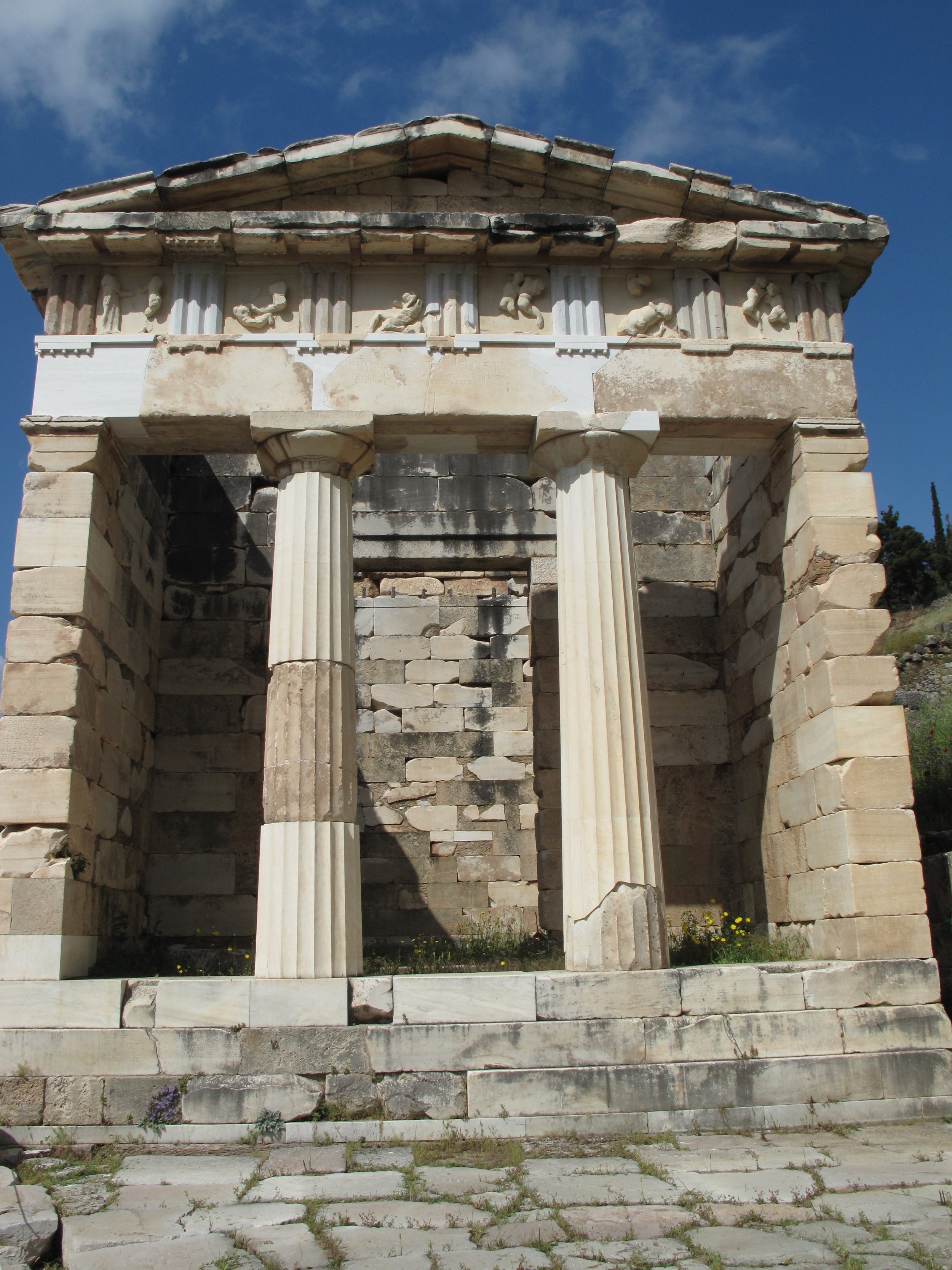Greece. The Oracle of Delphi and Center of the Ancient Greek World
Several years ago, I took a night ferry from Bari, Italy to Patras, Greece. After disembarking at the terminal in Patras, my companions and I took a bus to the modern city of Delphi (population 24,000). Our route on Greek National Road 48 took us through a pass separating Mount Parnassus from the Desfina Peninsula. Positioned at 632 meters above sea level, Delphi is about ten kilometers from the Gulf of Corinth.
To the ancient Greeks, Delphi was center of the world and a place where ordinary humans could seek guidance from Apollo (God of Light) through a high priestess known as the Oracle. In Greek mythology, Delphi was established at the meeting place of two eagles released by Zeus. Later, it was the home of Gaea, mother goddess of fertility and the earth. According to legend, an oracle belonging to Gaea was guarded by her serpent child Python. Python was killed by Apollo who stole the Oracle, a high priestess known as Pythia. Within ancient Greek culture, an oracle was a being who provided advice, counsel, and prophetic predictions about the future. Pythia took the earthly appearance of a woman over fifty years of age. Serving as a conduit between humans and Apollo, the Oracle of Delphi sat on a tripod chair inside the Temple of Apollo and was consulted on all questions such as whether to establish a new colony or go to war. One prophecy received by Agamemnon during the 8th century BC, was described in Homer’s Odyssey. Along with serving as home to the Oracle, Delphi was known as a site for early athletic competitions. Beginning in 586 BC, athletes from across the Greek world competed there as part of the Pythian Games, a precursor to the Olympics. Individual competitions took place in the city’s theatre and stadium.
The Oracle of Delphi was also known to Romans who built several structures in Delphi including a bathhouse and large cistern. After being damaged by an earthquake in 373 BC, the Temple of Apollo and surrounding structures fell into decay. This corresponded with a period when the Oracle’s credibility had declined because of doubtful predictions. The Oracle regained its stature in the 2nd century AD during the reign of Roman Emperor Hadrian. Even as Christianity spread throughout Europe in the 4th century, Delphi remained an important religious center. Delphi was moistly uninhabited for several centuries. The city’s ruins were documented by Cyriacus of Ancona during the 11th century and towards the end of the 15th century, a village called Kastri was founded on the site. Delphi was first excavated in 1880 and during the late 1890s, residents of Kastri were offered land for a new town site to facilitate additional excavations. In 1987, Delphi became a UNESCO World Heritage Site. It is currently part of Parnassus National Park.
After spending a night in the city, we visited the archaeological site and museum. The foundation of the former Temple of Apollo was constructed in the 4th century BC. Inside was the Altar of Cians and a chamber that once held the tripod chair where the Oracle sat. Today, only the Temple’s foundation, some steps, and a few columns remain. On the slope above the temple are stone treasuries built by Greek city-states to honor victories or to acknowledge help or advice from the Oracle. The most impressive of these is the Athenian Treasury, built to commemorate the Greek victory at the Battle of Marathon in 490 BC. Having been destroyed by the Gauls in the 3rd century BC, the Treasury was rebuilt in 1906 by the French Archaeological Institute using the structure’s original stone blocks.
Southwest of the precinct of Apollo is Southeastern Mansion. Constructed in the 5th century AD as a private home with four levels, it was adapted for use as a workshop for making pottery. Sibyl Rock is a pulpit-style outcrop between the Athenian Treasury and the Stoa (portico) of the Temple of Apollo. According to legend, the rock is located where Pythia delivered some of her prophecies. Farther up the hill is the Theater of Delphi, built in the 4th century BC and remodeled several times.
Our final stop was the archaeological museum which contains statues, mosaic floors, and other items excavated at the site. Dioramas inside the museum present the site’s layout during ancient times. I stopped to photograph a statue dubbed “The Philosopher” that depicts an older man in sandals who wears a loose himation leaving his chest and right shoulder bare.






